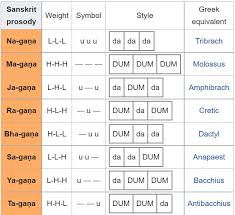The classical
Sanskrit literature begins more or less with Kalidasa. It is an irony that
practically very little is known about the life and date of the greatest of
Sanskrit poets namely Kalidasa. Numerous theories have been presented on his
date based on certain internal and external evidences. But there are so many
contradictory details that many of these theories prove to be unconvincing.
1.
The Korur theory:
Alberuni of 11th
century A.D. records in his travelogue a battle at Korur where one ‘ivaËmaaid%ya’ (Vikramaditya) defeated
the ‘mlaocC’ s – Mlecchas
(foreigners). The tradition says that Kalidasa lived in the court of King ‘ivaËmaaid%ya’ (Vikramaditya). This
battle took place in 544 A.D. and to commemorate it an era called ‘ivaËmaSakabd’ (Vikrama Sakabda) was
founded by Vikramaditya and dated back by 600 years. Hence the Vikrama starts
from 56 B.C. The theory says that Kalidasa might have lived in the court of
Vikramaditya. According to this theory, Kalidasa could have lived about 544
A.D. This theory has been propounded by Prof.Fergusson. But it has been
disproved by the discovery of the Mandasor inscription dated as early as 484
A.D. which clearly mentions the era in question.
2. Nine
gems theory:
This was
propounded by Scholar named Dr.Kern on the basis of the traditional association
of Kalidasa with a King called Vikramaditya. There is a traditional verse which
talks about the nine poets who ornamented the court of Vikramaditya.
'Qanvantir
xapNak AmarisaMh SaMku vaotalaBa+ GaTkp-r kailadasaa:.
#yaatao varahimaihrao naRpto: saBaayaaM
r%naaina vaO varÉicana-va ivaËmasya..’
This verse refers
to the fact that Dhanvantari, Kshhapanaka etc. were the nine gems in the court
of King Vikramaditya. A Buddhist shrine at Bodhgaya was constructed by one 'Amardova:’ (Amaradeva). This is not referred to
by Fahein, the Chinese traveller, who was in
3. Renaissance
theory:
Prof.Maxmuller is
the author of this theory. He holds that the Vedic age and the first phase of
Sanskrit literature ended with the 1st century B.C. Then as a result
of frequent foreign invasions, there was a long interval of literary
inactivity. The first five centuries of the Christian era formed a dark age in
the history of Sanskrit literature. Then there was a revival in all branches of
learning in the reign of King ‘ivaËmaaid%ya’ (Vikramaditya)
of the 6th century A.D. which can be considered as the golden age of
court poetry. Kalidasa was the leader of this renaissance and so he must have
lived in the 6th century A.D. This theory is not feasible for the
Gupta age is considered as the golden age in the Indian history and no one can
assume any literary inactivity during that period.
4. Traditional
theory:
The
theory which is consistent with the Indian tradition and which is upheld by
most of the Indian scholars and by Sir William Jones among those of the western
scholars is the one which assigns Kalidasa to the 1st century B.C.
The patron of Kalidasa is identified with Vikramaditya in whose commemoration
the famous Vikrama Era was started in 56 B.C. He is the actual King
Vikramaditya who bore the name, whereas many other kings of later age only bore
such a title. The argument for dismissing the fame of Vikramaditya of 1st
B.C. as a purely legendary figure is not convincing. The prescription of death
penalty for the crime of theft and the denial of the right of inheriting the
husband’s property to the widow which are in the drama ‘AiBa&anaSaakuntlama\’ clearly points to
an age before the beginning of the Christian era when the ‘smaRit’s (Smrtis) supporting those customs
were in vogue.
The
similarity in style and thought between Asvaghsha - ‘ASvaGaaoYa’, who is a Buddhist and a philosopher in
main and a poet by the way, and Kalidasa who was solely a poet and a dramatist
of established fame only led to this conclusion that Asvaghosha followed
Kalidasa as a model and not vice versa.
Still
others have assigned Kalidasa to the 2nd Century B.C. and have
argued that he must have been a contemporary of King Agnimitra of the Shunga
dynasty whom the poet has immortalised in the play ‘maalaivakaignaima~ma\’ (Malavikagnimitram).
There are other theories built on very slender or fictitious grounds. The
author of a work called Bhojaprabandha makes Kalidasa a court poet of King
Bhoja of Dhara. This theory is absurd on the face of it. First because it brings Kalidasa down to 11th
C.A.D. a date too improbable in the light of earlier reference to the poet and
second because it groups under the patronage of the same king authors of
different periods like Kalidasa, Bhavabhuti, Dandin etc.





No comments:
Post a Comment